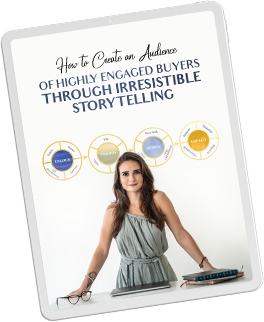We grow up hearing about all the terrible things that happen in the world. I’m sure many of us have at least witnessed one in some shape or form. There is a lot of kindness surrounding us, but there is also evil, and which side we are most exposed to is really a toss of the coin. The news keeps us informed of the misfortunes that constantly happen around us and may prod our emotions for empathy, but it’s simply not the same as seeing them with our own eyes.
I knew that Cambodia was one of the poorest countries in the world and had a horrific history, yet I didn’t fully feel this truth until I heard it spoken by its own people. Approximately 20% of Cambodia lives under the poverty line, which means they survive on less that $1.25 per day. There is no social welfare system: if someone gets seriously ill and has no money (which is most people), they cannot receive treatment and will likely die. As a local lamented, “it’s always the poor who suffer the most.” This severe level of poverty has led to inordinate amounts of prostitution, human trafficking, domestic violence, and parents sending their children to work at the expense of their education and well-being. Cambodia’s extreme corruption (it is one of the most 20 corrupt countries in the world) is so common, it was nonchalantly described by a local today as “part of the culture.”
Then there’s the Khmer Rouge, an evil that has stained Cambodia’s history with blood and cruelty. Khmer Rouge, a communist party led by totalitarian dictator Pol Pot, ruled over Cambodia during the 1970’s. It is responsible for the genocide of over 2 million people – ¼ of the country’s population at the time. This post cannot begin to cover the disgusting, inhumane atrocities that the Khmer Rouge have committed on innocent Cambodian people, including torture, cold-blooded murder of women and children, and submitting the entire population to strenuous working conditions and famine.
Today I felt a sliver of this brutality, and it was crushing. I visited the Tuol Sleng Genocide Museum, a former high school that was turned into a security prison (known as S-21), as well as the Choeung Ek Killing Field, a field of over 129 mass communal graves. The Khmer Rouge arrested anyone who didn’t suit their communist agenda, savagely torturing innocent people until they confessed to crimes they didn’t commit. Of the 17,000 prisoners that were tortured in the S-21 prison and eventually transported to the Killing Field for execution, only 7 survived. I can’t even properly explain the disdain I felt upon seeing these statistics. Thousands of innocent people were killed without mercy, for no legitimate reason other than one man’s madness.
Does this sound familiar?

GET ACCESS TO MY FREE MASTERCLASS
How to Create an Audience of Highly Engaged Buyers Through Irresistible Storytelling
We always say, “never again.” Yet how is it that humans continue to commit these atrocities, and so many are unpunished? We all know about the Holocaust, but what about all of the other genocides that are happening around the world, as recently as a few years ago in Uganda? It is staggering to be presented with hard evidence of how much evil humans can produce, and how often we can turn a blind eye to evil to serve our own purposes: for example, the U.S. supported the Khmer Rouge in order to oppose Vietnam, which was also invading Cambodia at the time. Perhaps they did not fully understand the extent of the genocide, and that in itself presents a problem of costly ignorance.



The same question kept plaguing me over and over again: why? Why would we allow something like this to happen? Why don’t we find out until it’s too late? Why would people do this to each other?
I just do not understand, no matter how much I try to stretch my imagination and empathy to put myself in the Khmer Rouge’s shoes, how people could be capable of committing such vicious, inhumane acts on their fellow humans.
What I did understand, was that this is a country marred by pain and horror. The scar is still fresh – Khmer Rouge didn’t surrender power until 1999, one year after Pol Pot’s death. A few years of mass executions left a country reeling economically, politically, and socially. I wondered about the Cambodian people. How do you escape when you are in this situation of extreme poverty and suffering? Where do you gather hope at the face of such brutalities, by your own people? How do you summon the strength to push through?
The halls of the S-1 prison were lined with photos of the victims. My guide told me that, once the Khmer Rouge regime fell, refugees would come back to this museum to look for long-lost family members. From endless rows of black and white pictures, the same face would look back at me: haunted, defeated stares of hopeless people who had all but given up on their survival. As I walked through, trying to make eye contact with as many faces as I could, one stopped me in my tracks. It was of a man, no older than 30, his eyes glossy and slightly looking upwards. What I couldn’t comprehend was the soft and gentle smile crossing his lips. I asked my guide how this was possible. Unfazed, he replied:
“He knew he was going to die, and he smiled one last time.”
I will never know why he was smiling. It could be hope, defiance, defeat, or even complete ignorance to the barbarity that he was about to undergo. Whatever the truth is, I saw peace. I saw, in the midst of so much incomprehensible evil, a spark of good. A man who, even in the most desperate of moments, had the capacity to muster a sign of kindness. In the midst of all the horrible history I experienced today, his smile gave me something to hold on to. How strange, that I would be the one who ended up comforted.

Want to become the best story
YOU'VE EVER TOLD?
Get behind-the-scenes weekly insights from me on all things storytelling,
branding, conscious life design, and other fun surprises!

